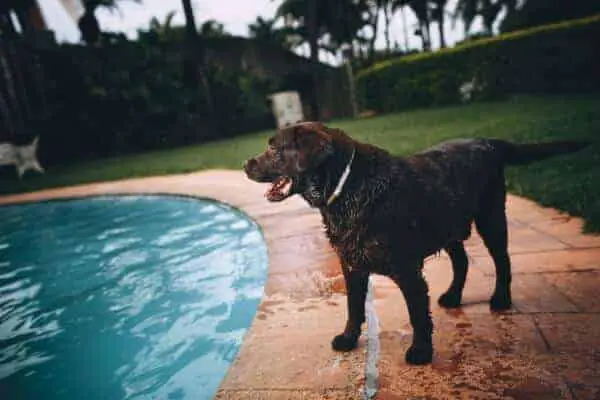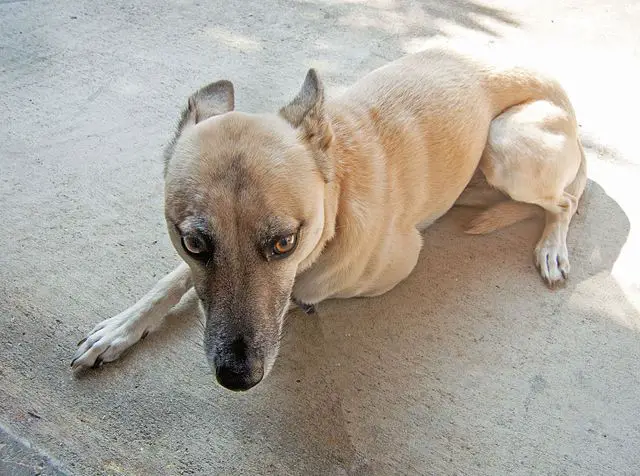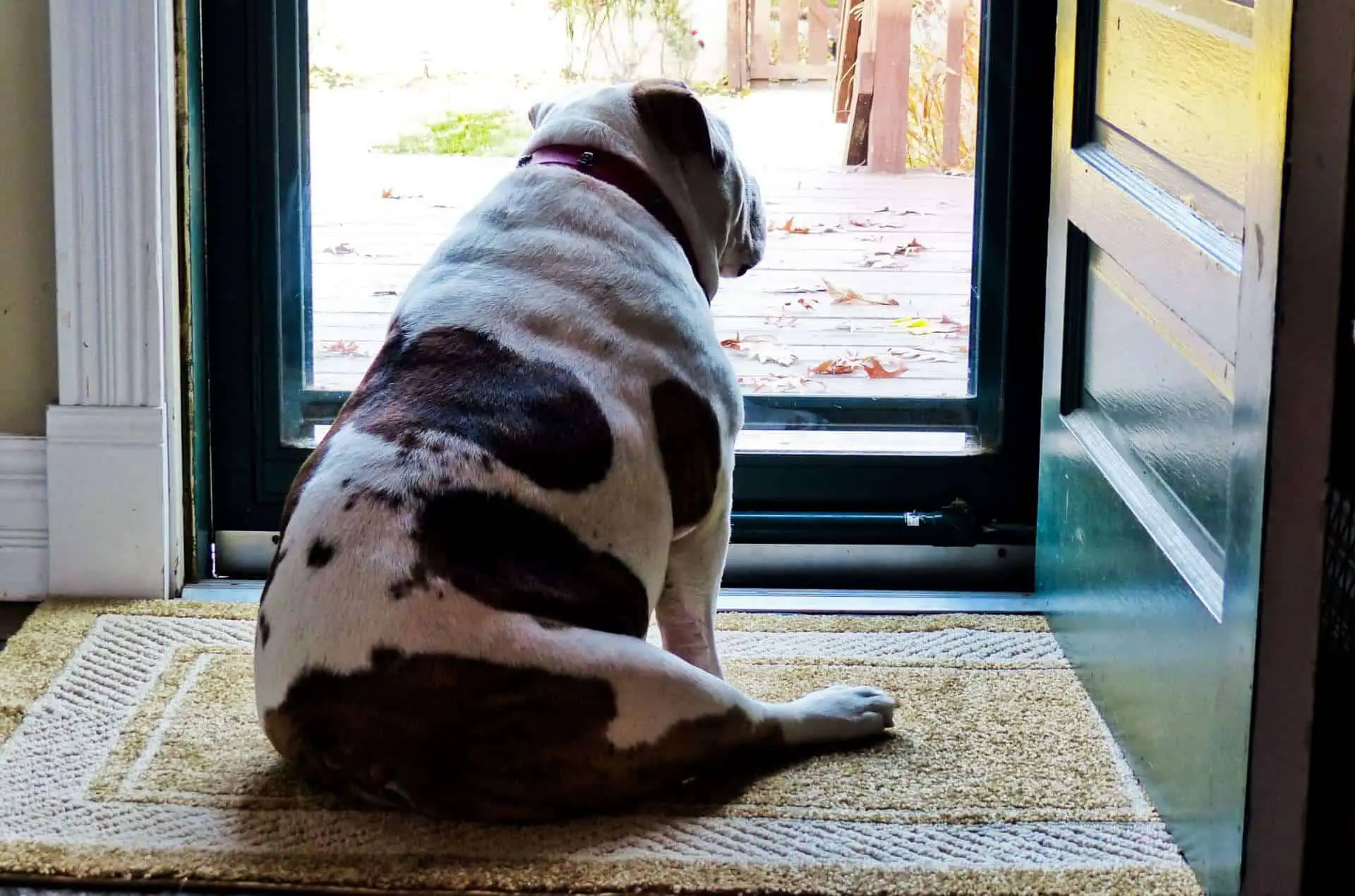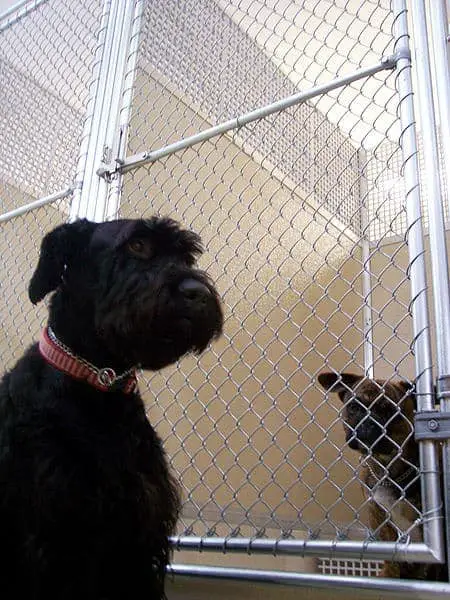There is no worse feeling than finding a child or an animal distressed in water. I can still clearly recall when my 8-week old Jack Russell puppy was busy sniffing around and exploring his brand-new home. Although he was only out of my sight for five minutes, I thought he was still following right behind me. I got to the back of the yard and heard faint splashing in the swimming pool and I immediately knew that it was my precious little dog, Buddy. My heart sank and I dropped everything and bolted over to pull him out.
He was instinctively treading water and doing the doggy paddle, but who knows for how long? I felt like a total failure for letting this happen! Buddy got lots of kisses and cuddles in a warm, dry towel and didn’t appear to be distressed or coughing from swallowed water so, thankfully, he didn’t hold a grudge. This was the first time one of my puppies had ever done that because I had taken the swimming pool, and the dangers it holds, for granted.
Despite having trepidations at first, my precious pooch returned to swimming a few weeks later in a controlled and fun environment which was great for us all to overcome that day’s events. Now Buddy seems to inherently know to only go into the water after someone (human or dog) else has jumped in first. We have had dogs in our family spanning generations, some natural water lovers and swimmers, others not so much. Luckily, we have never experienced a tragedy and hopefully, this article will help other families avoid one too.
Keep in mind that puppies have similar causes for concerns as toddlers do, what you would do for a baby human is pretty much the same as what you would do for a baby animal. Let us focus on puppies and how to familiarize them with swimming pools in the first place. What equipment you can purchase and what to do in cases of emergency. Swimming in bodies of water is a real treat for many doggies and their human friends, a few simple lessons and tweaks with making sure it continues to be so.
First lesson: as with kids, always have your puppies within eyesight around water
Swimming pool familiarization: Puppy and pool 101
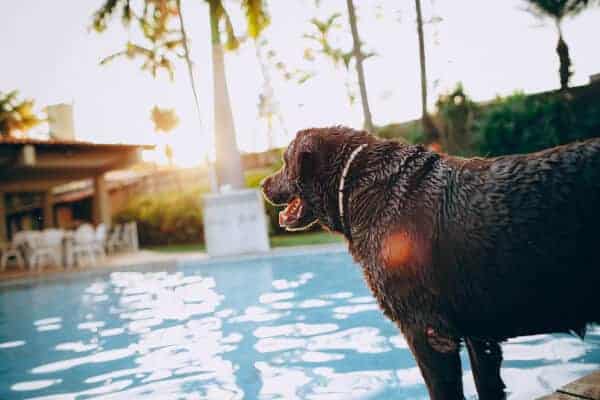
First experiences with water are about getting used to the sensation of being wet and does not mean being submerged as the inner ears shouldn’t get damp. Concentrate on how to get out of the swimming pool unaided. Dogs generally cannot climb swimming pool ladders and for puppies, it is a near impossibility. If you do not have steps or a slope into the pool, you will need to invest in some pool puppy steps to give you peace of mind. There are plenty of designs on the market to suit most needs and budgets.
Puppy’s first experience with being in a body of water is going to be a bit scary, so you need to make it as calm, stress-free and fun experience as possible. Make it a puppy pool party! If you have other dogs that swim, or friends with dogs that swim (and are good with puppies) then consider having an older dog show your puppy how it’s done and that there is nothing to be scared of.
Ideally, whoever the puppy is close to and feels comfortable with will hold the puppy close and give them lots of tickles and soothing words before they both slowly get into the shallow end of the pool, by their means of exit. Talking and stoking to reassure puppy as you both bob in the water, holding the puppy close to your own body, slowly submerge and swim gently so that the puppy is in the water to below its neck or upper body.
Be patient and wait for their initial panic to subside, constantly reassuring them. This should only take a few minutes, have a go at holding their bodies and seeing if they can do a beginner’s doggy paddle with their paws but do not let them go initially. This swimming reaction should hopefully come naturally. Once they have had a bit of time to relax and a paddle with their human and fur buddies, show them where their exit is. They will most likely want to bolt, so gently grip them so that they can feel the sensation of being on the step or the floor, standing with their heads above water. Once they have had a moment to realize that they are on their paws and there is nothing to worry about, let them go and most likely roll on the grass or possibly the couch or other clean item of furniture in your home.
This will need to be repeated a few times, but maybe with an hour or two between swims so they don’t get exhausted or anxious at the next dunking. Now repeat this fun game of swimming over a few days to sensitize them to the pool and how to make a safe exit.
Bear in mind that you are familiarizing your puppy with your pool, so when visiting other swimming pools, you will need to familiarize them with how to get out and not panic. It is especially important in unfamiliar bodies of water to keep an eye on your pup once they have their new-found bravery!
Chlorine and post-pool procedures
People have mixed views on pool chlorine and dogs. If your pool has so much chlorine that it hurts your own eyes and skin, then it certainly will for your animals. As with humans, a quick rinse of fresh water after swimming in a pool that is chlorinated with assist with removing any chemical residue from hair and skin. If your pup becomes a fully-fledged swimmer and you don’t have your pool fenced off, your dog is going to be in there as and when it feels like it in hot weather, regardless of humans being around to give them a rinse!
Drinking water from pools is likely not going to cause any harm to your dog as in many rural situations drinking water from creeks or dams is chlorinated with a similar chemical as your swimming pool water. Saying that, regular clean water should be put by your pool area for your puppy and they should be taken to the water bowl regularly to get into the habit of drinking whilst it is hot rather than drinking pool water. Sometimes this can be a bit of a lost cause though, as one of our Great Danes insists on drinking from the pool quite often and we have yet to find a way to dissuade the mammoth canine.
Be wary when swimming in oceans, dams rivers and lakes. Dried, salty water can be an irritant on the skin of your dog and stagnant bodies of water can have parasites and worms you don’t want making your puppy or dog sick. Ensure that you know if a particular body of water may be susceptible to swimmers’ itch or the like. River swimming should closely be monitored as dogs can get caught in currents, panic and drown. Never swim in flowing water that you are not familiar with, as around the corner the strength of the water flow can take you by surprise with scary or fatal consequences.
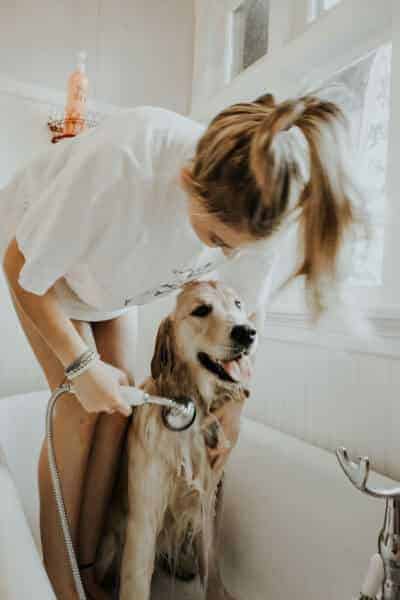
Pool safety equipment
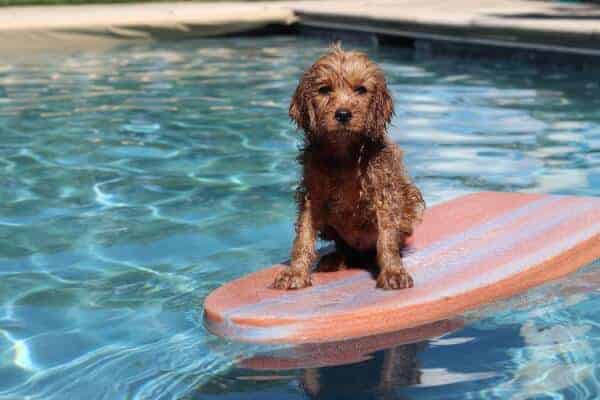
If you have an open access pool, even if it is a temporary one, then you need to be especially cautious for the safety of your pets, family members and visitors as, in the case of an accident, you could be liable. Ensure that you keep your puppy within sight until they are trained about how to paddle themselves out to safety. If you have friends and family who visit with their puppies or small children, then the unfenced and unattended pool can become a very dangerous place indeed. You need to make sure everyone is aware of the swimming pool, how to get out and how to safeguard their puppies and children on your property.
Should you decide to fence off the area, be careful to not be lulled into a false sense of security; children can open gates, some breeds can jump and others can dig, so learning to swim and learning how to get out of the pool if they fall in or get tired is still the number one priority for puppies and kids alike.
Besides fences you can also have floaties that live in the pool, including them in your initial familiarization by showing your puppy that they can latch onto this floating oasis with their claws is how they learn that the floatation devices are there to help them. But this is not always successful so it is not a fail-proof plan.
There are also flotation jackets for your puppies, which are extremely handy if you are keen boating or water sports enthusiasts. Having your dog on a leash which is either held of securely fastened to the boat is recommended if you have any thoughts that they may jump out. Puppies can get excited and leap from a boat to join their friend on water skis or get super excited if a fish is caught on a hook! An excited puppy leaping into the water could be a recipe for disaster without swimming lessons and a life jacket. However, no piece of equipment is as important as your puppy learning to swim and being safe in your own home as well as others.
Can dogs drown? Worst case scenario and what to do
Yes – dogs can drown which is normally due to fatigue, panic or gulping water. Dogs naturally know how to paddle and to keep their head above water to avoid choking. If your puppy or dog is found in distress and to have difficulty breathing, is vomiting, is lethargic or has collapsed or has cold paws, then you need to get them to a veterinarian clinic immediately. Wrap your puppy in a blanket to warm them up and give them plenty of verbal reassurances on the way. Secondary drowning can still be a very real threat and can happen up to 24 hours later.
If your puppy is struggling to breathe, you can attempt gentle mouth-to-nose resuscitation, every 3 seconds. Be careful to not blow hard, as this could cause further injuries. Bigger dogs can handle slightly harder blows of course. For CPR follows these instructions for dogs that have stopped breathing and have little to no heartbeat.
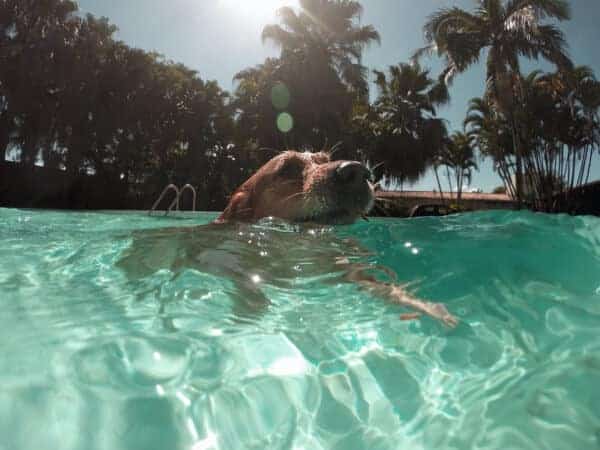
Swimming is fun for most dogs
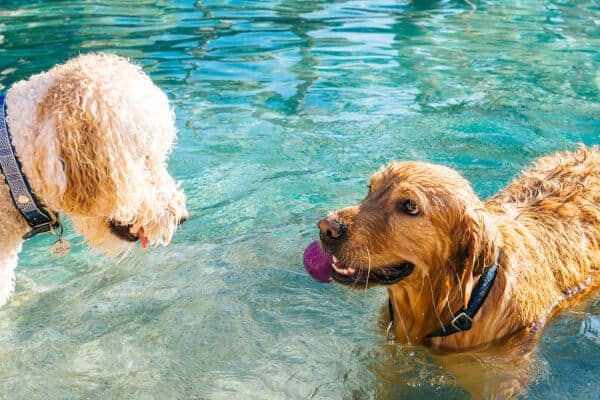
Swimming can be a fun, safe and great way to exercise your dog during the warm months of the year and to continue to have your dog a part of your family’s outdoor lifestyle. Luckily, my little Jack Russel Buddy now knows how to swim and enjoys jumping into pools or creeks and dams (or very muddy puddles!). Inevitably after a good rinse, he will proceed with rolling in the grass or making sure that he is no too clean before lazily lounging in the sun after the exertion of a summertime swim.
Remember that when visiting friends with pools, or around unfamiliar bodies of water, always show your puppy how to make a safe exit in case they need to. Regardless of whether you have fur or not, remember to keep stay hydrated and give your puppy easy access to cool, fresh water and shady areas to rest. Puppies will get tired quickly and, much like human babies, will spend much of their day asleep after even a minor amount of exercise.
Learning to swim is a lifesaving skill for puppies and children alike. As a responsible pet owner or parent, we must also learn how to keep our kids and puppies safe around water hazards. Hopefully, these tips and hints will give you a great place to start with your puppy’s life-long love of safe swimming.


